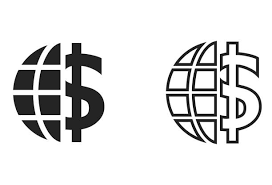
Electronic Fund Transfer Act (EFTA) Policy and Procedures
POLICY STATEMENT
It is the policy of [insert the name of your credit union] (“Credit Union”) to comply with the
requirements of the Electronic Fund Transfer Act (15 USC 1693) (the “EFTA”) and Regulation E
(12 CFR 1005). The Credit Union permits members to access their transaction and savings
accounts by electronic fund transfer (EFT).
Through the execution of this policy, the board directs management to implement procedures
that will establish the rights, liabilities, and responsibilities of all participants in the EFT system.
It will be the responsibility of [insert the title of the person responsible for Regulation E
compliance at Credit Union] to be aware of the regulations and laws governing such
transactions and to ensure that the Credit Union is in compliance with the law and regulation at
all times.
COVERAGE
KEY DEFINITIONS
DISCLOSURE REQUIREMENTS
Initial Disclosures




This policy covers any type of EFT that authorizes the Credit Union to debit or credit a
member’s account.
Access device means a card, code, or other means of access to a member’s account, or any
combination thereof, that may be used by the member to initiate EFTs.
Account means a demand deposit (checking), savings, or other member asset account
(including a payroll card) held directly or indirectly by the Credit Union and established primarily
for personal, family, or household purposes.
For purposes of this policy, references to “member” or “consumer” mean a natural person.
Electronic fund transfer (EFT) means any transfer of funds that is initiated through an electronic
terminal, telephone, computer, or magnetic tape for the purpose of ordering, instructing, or
authorizing a financial institution to debit or credit a member’s account. The term includes, but is
not limited to:
• Point-of-sale transfers;
• Automated teller machine (ATM) transfers;
• Direct deposits or withdrawal of funds;
• Transfers by telephon Transfers resulting from debit card transactions, whether or not initiated through an
electronic terminal;
• Payroll and gift cards; and
• Electronic check conversions (ECKs).
The term electronic fund transfer (EFT) does not include:
• Checks or drafts;
• Check guarantee or authorization programs;
• Wire or other similar transfers;
• Securities and commodities transfers; and
• Automatic transfers by account-holding institution.
The term error means:
• An unauthorized EFT;
• An incorrect EFT to or from the member’s account;
• The omission of an EFT from a periodic statement;
• A computational or bookkeeping error made by the Credit Union relating to an EFT;
• The member’s receipt of an incorrect amount of money from an electronic terminal;
• An EFT not identified correctly; or
• The member’s request for documentation or for additional information or clarification
concerning an EFT, including a request the member makes to determine whether an
error exists.
The term error does not include:
• A routine inquiry about the member’s account balance;
• A request for information for tax or other recordkeeping purposes; or
• A request for duplicate copies of documentation.
Preauthorized electronic fund transfer means an EFT authorized in advance to recur at
substantially regular intervals
Disclosures required under Regulation E are to be clear and readily understandable, in writing,
and in a form the member may keep.
Initial written disclosures will be made at the time a member contracts for an EFT service or
before the first EFT is made involving the member’s account. If an EFT service is added to a
member’s account and is subject to terms and conditions different from those described in the
initial disclosures, the Credit Union will provide disclosures for the new service.
The contents of such disclosures will include, as applicable:
• A summary of the member’s liability for unauthorized EFTs as set forth under Regulation
E and under state or other applicable law or agreement;
• The telephone number and address of the person or office the member should notify if
they discover an error;
• The Credit Union’s business days;
• The type of EFTs that the member may make and any limitations on the frequency and
dollar amount of transfers;
• Any fees the Credit Union imposes for EFTs or for the right to make transfers;
• A summary of the member’s right to receipts and periodic statements;
• A summary of the member’s right to stop payment of a preauthorized EFT and the
procedure for placing a stop-payment order;
• A summary of the Credit Union’s liability to the member for failure to make or stop
certain transfers;
• The circumstances under which, in the ordinary course of business, the Credit Union
may provide information concerning the member’s account to third parties;
• A notice that is substantially similar to the model form in the regulation concerning error
resolution (including the model for payroll cards, if applicable); and
• A notice that a fee may be imposed by an ATM operator when the member initiates an
EFT or makes a balance inquiry, and by any network used to complete the transaction.
PURPOSE OF INTERNATIONAL FUNDS TRANSFER AUTHORITY
- To regulate international funds movement
- To ensure compliance with international financial laws (e.g., AML/CTF)
- To maintain financial stability
- To prevent criminal financial activity
- To protect consumers in cross-border transfers
Core Components of IFTA
1. Participants / Parties Involved

Originator:
The individual or institution initiating the fund transfer.

Beneficiary:
The final recipient of the funds.

Intermediary Banks:
Banks that help in processing the funds between the originator and the beneficiary bank.

Sending/Receiving banks:
These are the primary banks handling the initiation and settlement of the transfer.

2. Messaging Standards and Systems

SWIFT (Society for Worldwide Interbank Financial Telecommunication):
Secure messaging system for cross-border financial transactions.

ISO 20022:
A global standard for financial messaging that enhances interoperability and data richness.

MT messages (e.g., MT103, MT202):
Standardized message formats used in wire transfers.

3. Compliance and Regulatory Frameworks

KYC (Know Your Customer):
Verification of customer identity.

AML (Anti-Money Laundering):
Prevents the transfer of illicit funds.

CFT (Countering the Financing of Terrorism):
Protects the system from being used to fund terrorism.

Sanctions Screening:
Ensures no sanctioned individual or country is involved in the transaction.

4. Settlement and Clearing Mechanism

Nostro/Vostro Accounts:
Accounts banks hold for each other to facilitate currency transfers.

RTGS (Real-Time Gross Settlement):
System for large-value instant payments.

Correspondent Banking:
Banking relationships enabling cross-border transactions.

5. Risk Management

Operational Risk:
Errors in processing, system failures, etc

Fraud Risk:
Detection of potentially fraudulent transactions.

Currency Risk:
Fluctuations in exchange rates during international transfers.

6. Technology Infrastructure

Audit Trails:
Full documentation of transaction history.

Monitoring Systems:
To detect suspicious or unusual activity.

Reporting Requirements:
Often required by law (e.g., SARs—Suspicious Activity Reports).
7. Technology Infrastructure

Secure Payment Gateways
it adds extra security to the funds transfer

Blockchain (emerging):
For traceable and secure cross-border payments.

APIs:
Used for integrating bank systems with transfer services.
Fees and Exchange Rates

Transfer Fees:
Charged by banks or services for facilitating the transaction.

Currency Conversion Rates:
Exchange rates applied when transferring between different currencies.

9. Customer Communication and Support

Notifications:
Confirmations, delays, or errors.

Dispute Resolution:
In case of failed or delayed transfers.
FUNCTIONS OF INTERNATIONAL FUNDS TRANSFER AUTHORITY
1. Regulatory Oversight & Compliance
Enforces anti-money laundering (AML) and counter-terrorism financing (CTF) regulations.
Ensures financial institutions comply with international standards such as FATF (Financial Action Task Force) guidelines.
Coordinates with central banks, financial intelligence units (FIUs), and international regulators.
2. Transaction Monitoring
Monitors large and suspicious international fund transfers.
Triggers alerts for high-risk transfers or anomalies in transaction patterns.
Tracks the source and destination of funds for transparency.
3. Reporting Requirements
Requires banks and financial service providers to report:
Transfers over a certain threshold (e.g., $10,000).
Transfers involving high-risk countries.
Transfers linked to politically exposed persons (PEPs).
4. KYC (Know Your Customer) Enforcement
Ensures financial institutions verify customer identity before initiating international transfers.
Prevents illegal actors from using false identities or shell companies.
5. Information Sharing
Collaborates with international organizations and governments for intelligence exchange.
Shares data with:
Financial Action Task Force (FATF)
Interpol
International Monetary Fund (IMF)
Egmont Group of FIUs
6. Licensing and Regulation of Transfer Services
Regulates and licenses:
Money service businesses (MSBs)
Payment gateways
Remittance companies
Sets rules for operations, audits, and capital requirements.
7. Suspension and Freezing of Funds
Has the authority to suspend, block, or freeze transactions under investigation.
Works with law enforcement for asset seizure when illegal activities are confirmed.
8. International Sanctions Enforcement
Prevents transfers involving individuals, organizations, or countries under UN, EU, or national sanctions.
Flags blacklisted entities and blocks associated transactions.
9. Cybersecurity Oversight
Promotes strong encryption and cybersecurity protocols for cross-border transfers.
Works to prevent cyber-fraud and digital identity theft.
10. Dispute Resolution Mechanism
Offers mechanisms to resolve disputes between:
Banks and customers
Sending and receiving institutions
Cross-jurisdictional issues
Technical & Operational Functions:
SWIFT Monitoring Tracks transactions using the SWIFT network codes (MT103, MT202, etc.)
Audit Trails Maintains a secure and verifiable log of all transactions
Real-time Surveillance Uses AI and algorithms to monitor activities 24/7
Risk Assessment Scores transactions and customers based on risk profiles
Data Retention Stores transaction records for a legally defined period (e.g., 5–7 years) Cooperation with Other Entities:
Cooperation with Other Entities:
Central Banks: For clearing and settlement
Commercial Banks: As reporting entities
Customs & Tax Authorities: To ensure declarations match fund flows
Interpol/World Bank: For criminal and corruption investigations

Everest Camp Trek

Walking Holidays
Authorities Involved in IFTA
Central Banks: Oversee capital controls, monitor outflows/inflows.
Commercial Banks: Execute and manage customer transactions.
Financial Intelligence Units (FIUs): Detect and report suspicious transactions.
Regulatory Agencies: Enforce AML/CFT regulations (e.g., SEC, CBN, FCA).
International Bodies: FATF, IMF, BIS offer guidelines and oversight.
Core Objectives of IFTA
Regulate cross-border payments.
Prevent financial crimes like money laundering and terrorism financing.
Ensure transparency and traceability of international transfers.
Protect financial systems through compliance standards and reporting procedures.

Workflow in IFTA
Customer → Submits request with docs
Bank → Performs KYC/AML checks
IFTA Body (if applicable) → Approves or reviews large transfers
SWIFT Message → Sent to receiving bank
Funds → Received and credited to beneficiary
Reporting → Filed with authorities if needed